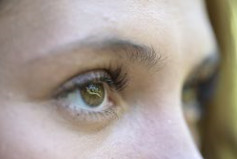Author: DynamicBrain Inc.
Publication: Monthly Newsletter
Published Date: April 23, 2024
Since 2001, scores of papers have been published on various findings of the NIH-funded, 20-year-long Advanced Cognitive Training for Independent and Vital Elderly (ACTIVE) study. Prior study reports have shown various benefits of cognitive training such as a 31% reduced fall risk in older adults, a 48% decrease in at-fault car crashes, and a 29 to 48% reduction in incidences of dementia.
We’re thrilled to share with you the latest paper just published in the journal of Alzheimer’s & Dementia. In addition to having other areas of focus, this paper also summarized prior research on how demographic characteristics (age, gender, and education) and health characteristics (cognitive and physical health status) affected participants’ cognitive training results.
The researchers found different areas of impact for each intervention group. But it’s interesting to know that computerized brain training (emphasizing speed and accuracy of processing) benefited older adults regardless of age, gender, education, or baseline cognitive or physical health status, and that the benefits remained 5 and 10 years after training!
For some of you, there is no shortage of studies to encourage you to improve and maintain a healthy brain. It just requires your determination and perseverance. All we can do at our end is continue sharing published studies using BrainHQ – and there are over 200 of them now. For those of you who still don’t have full access, join now!

Kind regards, Frieda Fanni
President
DynamicBrain Inc.
DynamicBrain Inc. is the Canadian partner of Posit Science Corporation since 2010 providing brain fitness program BrainHQ in English and French.
|
 |
 The brain’s tiny messengers
The brain’s tiny messengers
As part of the brain’s communication system, cells produce small extracellular vesicles (sEVs) to ferry around a wide variety of proteins, lipids, and byproducts of cellular metabolism. These messenger sEVs, which are often likened to tiny bubbles, carry surprisingly complete sets of instructions that can alter cellular functions, according to new research. That contrasts with our previous understanding of what these tiny messengers are capable of.
Read on to find out how.
 A blink of realization
A blink of realization
Blinking may do more than simply wet the eyes. That’s what findings at the University of Rochester suggest after researchers set out to test whether blinking might have something to do with maintaining visual acuity. Published in the Proceedings of the National Academy of Sciences, the researchers recruited 12 young adults and used a high-resolution eye-tracking device to study characteristics of the volunteers’ eyes while they looked at images of varying contrast.
See what the findings tell us about why we blink.